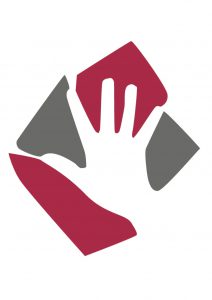GOLFER’S ELBOW
Pain over the bony prominence on the inner aspect of the elbow. This prominence (epicondyle) serves as the attachment for the muscles in the forearm that allow the wrist to be bent towards the forearm (flexion) and the forearm twisted to bring the palm facing down (pronation). The condition is also referred to as Medial Epicondylitis. However this is misleading, as the pain does not result from inflammation.
WHAT CAUSES IT?
Although the cause of this condition is unclear, it is believed that it results from repeated tearing of the tendon at the bony attachment, followed by a failure of this to repair completely. The problem is often seen in manual workers and sports players. The condition gets it’s name from the prevalence of this problem in golf players.
WHAT ARE THE SIGNS AND SYMPTOMS?
The primary problem in this condition is pain over the bony prominence on the inner aspect of the elbow but the pain can travel down the forearm. It tends to affect the dominant side more often and can make it difficult to move the elbow when the pain is particularly severe.
HOW IS IT DIAGNOSED?
A detailed history and examination is generally enough to establish the diagnosis. You may however be sent for either an ultrasound or MRI scan to assess the severity of the condition or when the diagnosis is unclear.
HOW IS IT TREATED?
Most cases will settle without surgery but can in some cases take up to 12 months to achieve complete improvement. The first line of treatment tends to involve rest combined with avoidance of activities that bring on the pain. This is followed by simple pain killers and an elbow strap and this is often all that is needed to treat this. A course of physiotherapy is often also helpful when the pain fails to settle. For patients who fail to respond to non-operative measures an operation is occasionally necessary.
WHAT DOES THE OPERATION INVOLVE?
The operation is performed under a general anaesthetic and involves the removal of the unhealthy tendon tissue. By removing the source of the pain and causing bleeding in the surrounding bone, the remaining tendon can heal back to the bone allowing the pain to settle. The operation cures the pain completely in approximately 70% of patients. It can however take up to 3 months to notice a significant improvement in your pain and up to a year before you completely recover from the surgery.
AFTERCARE
Following the operation you will normally have a bulky dressing covering your wound for 48hours. This is then replaced with a sticky dressing at 48hours until 10 days following your operation. The stitches will dissolve and do not require removal.
RETURN TO WORK
This depends on the nature of your work. For a sedentary occupation the time off is normally 2 weeks. For a manual occupation this can be as long as 6 weeks.
DRIVING
It is normally safe to drive within 6-7 days of your operation but can take up to 2 weeks before you are completely comfortable to start driving.
RETURN TO SPORT
This depends on the intensity of the sport and can range from 6weeks to 3 months off.
COMPLICATIONS
Like with any surgery there are a number of small risks associated with this operation.
Infection (1%) is a risk with all surgery. In the majority of cases these are infections around the wound and can be treated with a course of antibiotics. The more unusual deep-seated infections however can require admission to hospital and surgery to clean the wound out if necessary.
Swelling and Stiffness can remain for many months following surgery. It is important to elevate the limb and keep all joints that are not immobilised with a splint or dressing, active.
Nerve Injury is a potential but very rare risk with this surgery. Often the nerves at greatest risk are the tiny nerves supplying skin in the area of the wound and cutting through these may result in an area of numbness that is not often troublesome. The ulnar nerve sits in a bony groove just behind the epicondyle but injury to this nerve is very rare.
Recurrence is an unusual complication. You may however find that the symptoms recur some time after the original operation having completely settled initially. In this rare event a second operation may be necessary.
Complex Regional Pain Syndrome is an extremely rare (1%) complication that can follow any injury or surgery to a limb. In this situation the nerves in the arm over-react to the point where the hand becomes very painful, swollen and sensitive. This condition does improve with time but can be problematic for many months (see section on Complex Regional Pain Syndrome).
